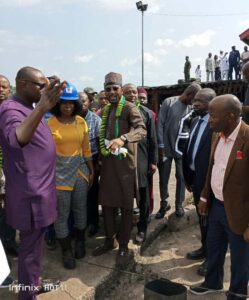-
July throughput reached 935,345 TEUs, up 2.5% from previous record in July 2019
-
August imports forecast to begin easing from record highs with retailers cancelling orders as shoppers rein in pandemic spending
-
China factory orders just reported are slowing and top US importer Walmart cutting billions of dollars in orders to align inventory levels with expected demand
Port of Los Angeles saw a record throughput in July, with an estimated 935,345 twenty-foot equivalent units (TEUs) of containers, outpacing by 2.5% the previous record set in 2019 and setting the fifth monthly record in seven months in 2022.
The Western Hemisphere’s busiest port, however, expects August imports to begin easing as retailers cancel orders in the wake of shoppers’ pullback from freewheeling pandemic spending, its executive director Eugene Seroka said on August 17.
Los Angeles and its sister Port of Long Beach handle more imports from China than any other US ocean trade gateways, and their forecasts are considered an economic barometer.
“Remarkably, we continue to move record amounts of cargo while working down the backlog of ships almost 90%, a huge accomplishment by all of our partners,” Seroka said.
“Even with the current rail challenges, our marine terminals are more fluid than last year. That’s due in part to our Port Optimizer data portal that allows our stakeholders to see around corners and tackle problems before they arise,” he said in a news briefing.
Seroka noted that the Southern California supply chain landscape has improved, noting ships are now waiting for space at many other ports around the country.
“Our terminals have capacity,” Seroka added. “For cargo owners looking to re-chart their course, come to Los Angeles. We’re ready to help.”
Seroka was joined at the media briefing by Matt Schrap, chief executive of the Harbor Trucking Association. Schrap discussed the impact of AB5 on California truckers, how to attract and retain new drivers and the trucking industry’s transition to cleaner vehicles.
Transport workers went on strike in late July protesting against the Assembly Bill 5 (AB5) authored by former Assembly Member Lorena Gonzalez in 2019. Provisions in the bill require workers to satisfy a three-part test to be considered independent contractors.
While official July cargo volume will be available soon on the Port’s website, Seroka offered estimates on Wednesday that are expected to change only slightly when final.
July 2022 loaded imports reached an estimated 485,472 TEUs, an increase of 3.4% from the previous year and 8% higher than the previous five-year June average.
Loaded exports reached an estimated 103,497 TEUs, up 13% from the same period last year. Empty containers were estimated at 346,376 TEUs, increasing 5% from last year.
Seven months into 2022, the port has moved an estimated 6,349,248 TEUs, on pace with the record 10.7 million TEUs set last year, the busiest calendar year in its 115-year history. However, times are changing and the global economy is slowing.
“Imports will begin to ease somewhat. I expect to see that reflected in our August cargo numbers,” Reuters quoted Seroka in a report.
“China factory orders just reported were slowing and some US retailers continue to say they have elevated inventories,” he said. Incoming shipments at Los Angeles and Long Beach have been running more than 25% higher than before the pandemic in 2019.
Walmart, the No.1 US importer of containerized goods, said on Tuesday it had “cancelled billions of dollars in orders to help align inventory levels with expected demand.”
Seroka expects the port to handle fewer appliances, sporting goods and fixtures for bathrooms and kitchen remodels – as some of those purchases are not likely to be repeated in the near term.
“The heady days of growth in imports are quickly receding,” Hackett Associates founder Ben Hackett wrote in an August 2022 report prepared with the National Retail Federation (NRF), according to Reuters.
While Hackett and NRF expect second-half imports at major US container ports to decline versus 2021, they project that full-year 2022 imports will rise 2.1% to 29.7 million TEUs, which would be a record, Reuters said.
“The takeaway is that harder times are ahead, at least until mid-2023,” said Hackett, whose outlook calls for the import decline to deepen in 2023.
Source: https://www.portcalls.com/la-port-sees-record-july-as-imports-ease/











